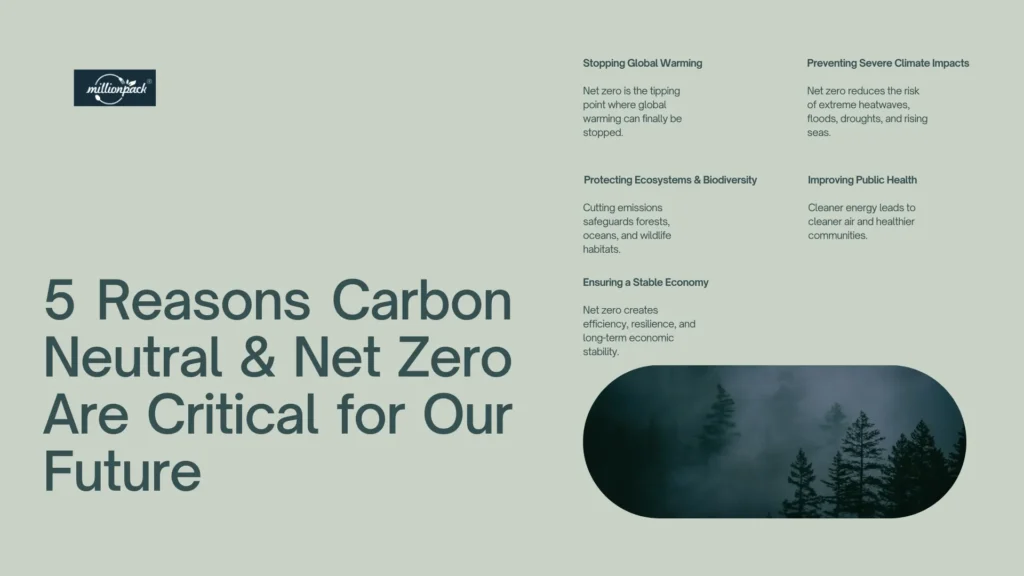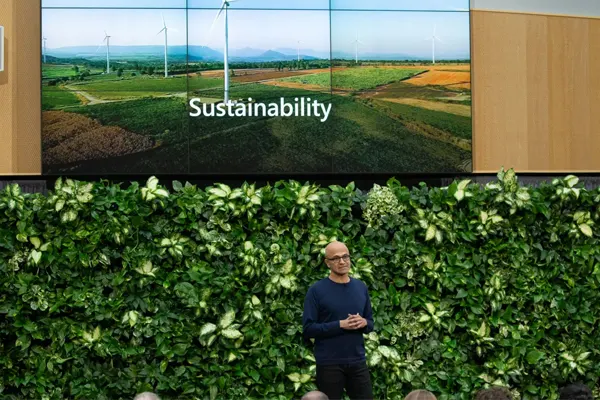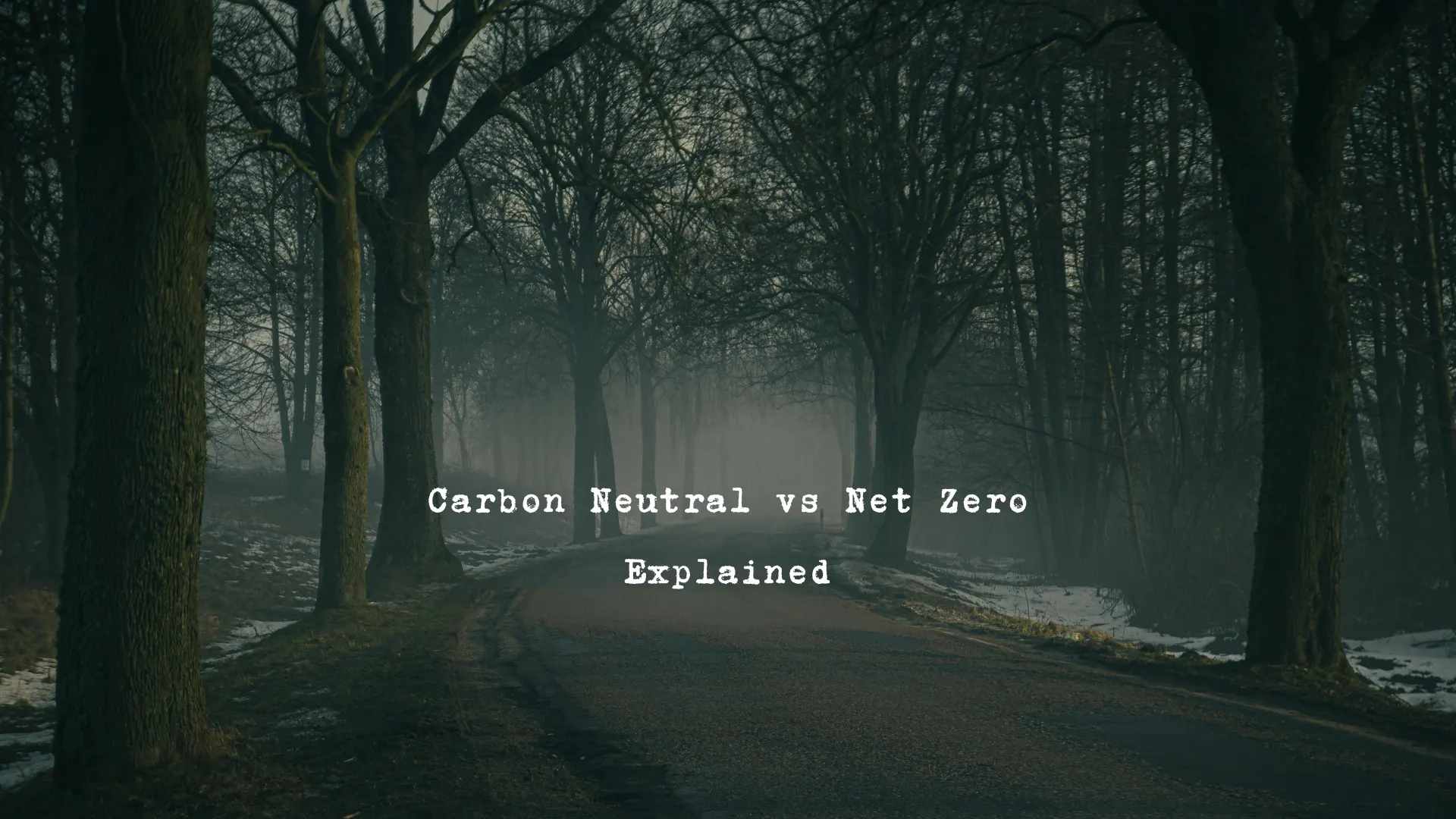Carbon Neutral vs Net Zero keeps showing up in headlines, corporate pledges, and policy talk, but a lot of people still mix them up. That confusion makes it harder to clearly understand what each term means and how they differ. This knowledge is key for anyone wanting to navigate sustainability choices with confidence.
According to the Paris Climate Agreement, the world has less than three decades to reach Carbon Neutral vs Net Zero emissions globally. While both carbon neutrality and net zero are part of this larger goal, they do not represent the same approach. Carbon neutral usually means balancing out carbon dioxide emissions through measures like verified offsets, while net zero requires a deeper transformation that cuts all greenhouse gases as close to zero as possible before turning to removals. Understanding the distinction between Carbon Neutral & Net Zero helps put climate targets into perspective and highlights why these terms matter for businesses, policymakers, and consumers alike.
This article clears the air. We will unpack Carbon Neutral vs Net Zero in plain language, explain the differences, and show how both approaches contribute to a greener future. By the end, you will have the clarity to recognize each concept for what it is and see how they fit into the bigger picture of climate action.
What Is Carbon Neutral?
Carbon neutral, also known as carbon neutrality, means the carbon dioxide linked to a defined activity, product, or organization is balanced to zero over a given period. The process usually begins with measuring emissions within a clear boundary and time frame. Next comes reducing as much as possible through actions like improving energy efficiency, switching to renewable power, or redesigning processes. The final step is compensating for the remaining emissions through verified carbon credits from projects that remove or avoid CO₂, such as forest restoration, peatland protection, renewable energy development, or efficiency upgrades. When the amount released and the amount removed are equal, the balance is achieved.
According to the European Commission, natural carbon sinks such as forests, soils, and oceans absorb between 9.5 and 11 gigatonnes of CO₂ each year. At present, no artificial system exists that can capture carbon dioxide at the scale needed to fight global warming on its own. This reality leaves organizations with two main routes to carbon neutrality. One is to drastically cut their emissions on the path toward net zero. The other is to balance what remains through carbon credits and offsetting (which are traded on carbon markets and represent verified emission reductions or removals). In practice, most companies follow a mix of both approaches, reducing wherever possible while compensating for the rest.
In business practice, a credible carbon-neutral claim requires transparency. Companies must clearly define which operations or products are covered, measure emissions using recognized accounting methods (such as the Greenhouse Gas Protocol), and prioritize real reductions before relying on offsets. The credits they purchase should meet strict quality criteria such as additionality, permanence, and independent verification. Many organizations follow standards like PAS 2060 to provide assurance. When done in this way, carbon neutrality becomes a meaningful first milestone on the longer journey to net zero.

What Is Net Zero?
Net zero means that the total amount of greenhouse gases released into the atmosphere is reduced as close to zero as possible, with any unavoidable emissions balanced by long-term removals. Unlike carbon neutrality, which usually focuses on carbon dioxide within a defined boundary, net zero looks at the entire picture. It requires action on all greenhouse gases, including methane, nitrous oxide, and industrial refrigerants. This broader scope makes net zero a more ambitious target, demanding deeper transformation in how energy is produced, goods are manufactured, and land is managed.
The concept of net zero gained global recognition through international climate negotiations. It was embedded in the Paris Agreement of 2015, where countries committed to limit global temperature rise to well below 2°C and ideally to 1.5°C above pre-industrial levels. Building on this, scientific analysis by the Intergovernmental Panel on Climate Change (IPCC) highlighted that to achieve this goal, global emissions must fall nearly in half by 2030 and reach net zero around 2050. In other words, net zero is not just a buzzword but a scientifically defined pathway to prevent the most dangerous impacts of climate change.
For businesses and industries, reaching net zero requires going far beyond purchasing credits. A company must cut emissions across its entire value chain, including energy use, raw material sourcing, supply chains, product use, and end-of-life disposal. Only the hardest-to-eliminate emissions can be offset, and even then, the preference is for high-quality removals like reforestation or engineered carbon capture. This makes net zero a long-term goal that involves innovation, investment, and collaboration at every level of society. It also presents challenges, from higher costs and technology gaps to social and economic transitions, but it remains the benchmark for serious climate action.
What Is the Difference Between Carbon Neutral vs Net Zero?
Although the terms carbon neutral and net zero are often used interchangeably, they are not the same. Carbon neutrality focuses on balancing carbon dioxide emissions within a defined scope and time frame, usually by combining reductions with the purchase of carbon credits. Net zero, on the other hand, is broader and stricter. It requires deep cuts across all greenhouse gases first, and allows only a very limited amount of offsetting for the residual emissions that cannot be avoided.
Carbon Neutral vs Net Zero:
| Aspect | Carbon Neutral | Net Zero |
|---|---|---|
| Scope | Primarily focuses on carbon dioxide (CO₂) | Covers all greenhouse gases (CO₂, CH₄, N₂O, F-gases) |
| Approach | Measure emissions, reduce some, offset the rest with credits | Reduce emissions across the value chain as close to zero as possible, offset only what remains |
| Offsets | Heavily used to balance emissions | Limited use, only for residual emissions, preference for permanent removals |
| Timeframe | Short-term and annual claims are common | Long-term target, typically aligned with 2050 goals |
| Reference | Often aligned with PAS 2060 or similar standards | Guided by the Paris Agreement and IPCC pathways |
| Goal | Balance carbon dioxide within a chosen scope | Achieve a stable climate by balancing all greenhouse gases globally |
Why Carbon Neutral and Net Zero Goals Are Essential?
Stopping Global Warming
Achieving net zero emissions is widely recognized as the tipping point at which global warming can be halted. Without reaching this balance, the planet will continue to heat up as greenhouse gases accumulate in the atmosphere. Carbon neutrality can act as an early step, but the long-term solution is reaching net zero to truly stabilize the Earth’s climate.
Preventing Severe Climate Impacts
If emissions continue unchecked, extreme weather events such as prolonged heatwaves, destructive floods, and rising sea levels will become more frequent. These impacts disrupt daily life, damage infrastructure, and endanger millions of people worldwide. Net zero targets are essential to preventing the most harmful outcomes and creating a safer future.
Protecting Ecosystems and Biodiversity
Human-driven emissions are placing immense stress on natural ecosystems. Forests, coral reefs, and wildlife habitats are increasingly vulnerable to rising temperatures and changing weather patterns. By cutting emissions to net zero, we protect biodiversity and maintain the natural systems that support clean air, fresh water, and food security.
Improving Public Health
Greenhouse gas emissions often go hand in hand with air pollutants. Reducing reliance on fossil fuels not only cuts carbon but also improves air quality, especially in urban areas. Cleaner air means fewer respiratory illnesses, lower healthcare costs, and healthier communities overall.
Ensuring a Stable Economy
Transitioning toward carbon neutral and net zero practices encourages efficiency, innovation, and resilience. By investing in renewable energy, cleaner transport, and sustainable production, economies can reduce their exposure to volatile fossil fuel markets. In the long run, this shift ensures a more stable and reliable energy supply, supporting sustainable growth.

Effective Strategies to Begin the Carbon Neutral or Net Zero Journey
Measure and Understand Emissions
The first step is to establish a clear picture of where emissions are coming from. Organizations and individuals should conduct a carbon footprint assessment, often using frameworks such as the Greenhouse Gas Protocol. This involves identifying direct emissions, like fuel used in company vehicles, as well as indirect emissions, such as electricity consumption and supply chain activities. Without accurate data, it is impossible to set meaningful targets.
Set Ambitious but Realistic Targets
Once the baseline is known, the next step is setting clear, time-bound goals. Many businesses start by aiming for carbon neutrality within a few years while committing to a longer-term net zero target by 2050 or sooner. Targets should be science-based, aligning with international standards, to ensure credibility and accountability.
Prioritize Emission Reductions
Reduction always comes before compensation. Practical steps include switching to renewable electricity, investing in energy-efficient equipment, electrifying transport fleets, and redesigning products with lower carbon footprints. These changes not only reduce emissions but can also lower long-term costs and improve resilience.

Use Offsets Strategically
Offsets remain an important tool, especially in the short term. High-quality carbon credits from verified projects, such as reforestation, wetland restoration, or direct air capture, can balance out residual emissions. However, offsets should never replace reduction efforts. They are most effective when used for emissions that are currently difficult or impossible to eliminate.
Engage Stakeholders and Build Transparency
Sustainability goals are easier to achieve with broad participation. Employees, customers, investors, and suppliers should be included in the transition. Regular reporting, preferably through recognized disclosure systems, helps maintain transparency and builds trust. Many companies also pursue third-party verification, such as PAS 2060 certification, to strengthen credibility.
Invest in Innovation and Long-Term Solutions
Achieving net zero requires technologies that are still developing today. Companies can invest in research and innovation, such as advanced battery storage, carbon capture and storage (CCS), or hydrogen energy. Supporting these solutions now ensures readiness for deeper decarbonization in the coming decades.
The Future of Sustainability and Climate Action
The shift toward Carbon Neutral vs Net Zero is reshaping industries everywhere, including the food sector. As consumers demand more sustainable solutions and governments set stricter environmental goals, packaging is no longer just about functionality. It is also about reducing emissions, protecting ecosystems, and contributing to a greener future. Carbon neutrality offers businesses a practical step forward, while net zero represents the ultimate commitment to long-term climate responsibility.
At Million Pack, we believe packaging plays a vital role in this transition. By choosing eco-friendly materials and innovative designs, food brands can cut their footprint and meet rising expectations for sustainability. Every decision, whether switching to compostable trays, recyclable films, or renewable-based materials, brings us closer to a healthier planet.
FAQs
1. How long does it take for a company to reach carbon neutrality?
The timeline depends on the company’s size, industry, and current carbon footprint. Some businesses can achieve carbon neutrality within a year by measuring emissions and purchasing verified offsets, while others may take several years to implement meaningful reductions. Achieving net zero usually takes longer, as it requires deep structural changes across supply chains and operations.
2. Is carbon neutral or net zero mandatory for companies?
In most countries, achieving carbon neutral or net zero is not yet mandatory, but regulations are tightening. Governments are introducing stricter reporting requirements and setting national net zero targets, which may soon influence corporate standards. Many companies are also committing voluntarily, driven by customer demand, investor expectations, and the desire to stay competitive.
3. What are the benefits to a company achieving carbon neutrality or net zero?
Reaching carbon neutral or net zero status brings both environmental and business benefits. Companies reduce their climate impact, improve energy efficiency, and often save on operational costs. Just as importantly, these commitments strengthen brand reputation, attract eco-conscious consumers, and open opportunities for sustainable investment. Long-term, they position businesses as leaders in the global transition to a low-carbon economy.







